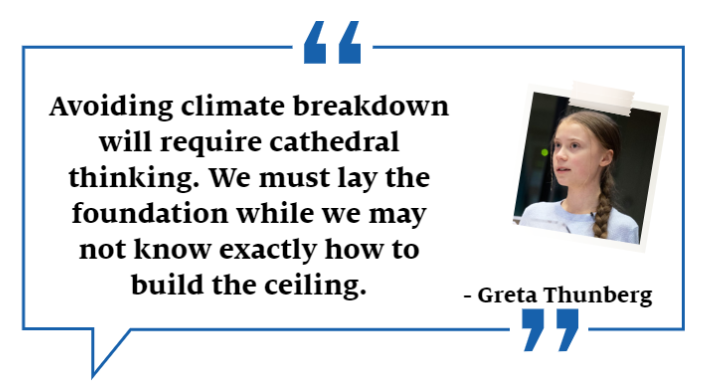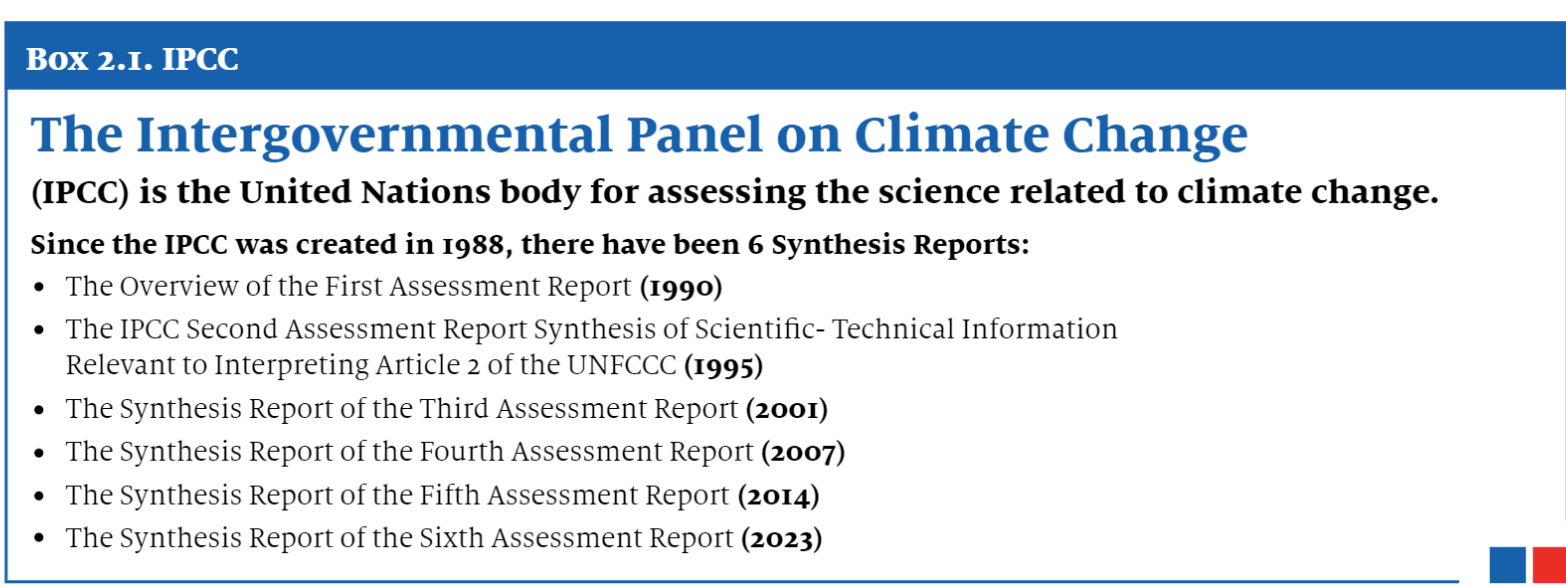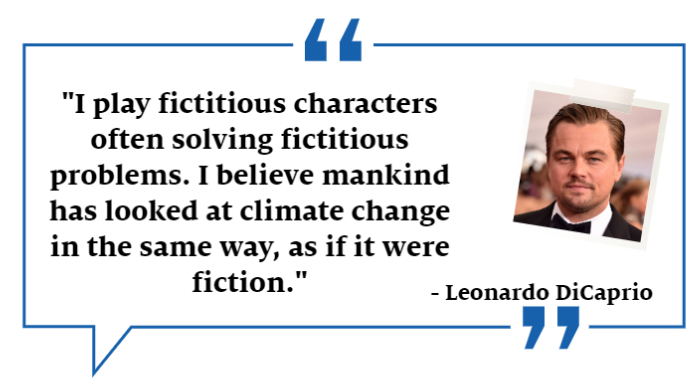Introduction
Global climate change is an imminent and defining issue of our times. As nations grapple with the impacts of a changing climate, the discourse surrounding these crucial negotiations weaves a narrative that transcends borders and encapsulates our collective struggle for a sustainable future.
How did the Climate Change Negotiations (CCNs) take root?
The narrative surrounding climate change negotiations has undergone significant evolution over the years, reflecting shifts in scientific understanding, political dynamics, and societal awareness.
- Ground-breaking Rio Earth Summit (1992): The summit resulted in some of the first international agreements on climate change, which became the foundation for future accords.
- Among them is the UN Framework for Climate Change Convention (UNFCCC), which aims to prevent “dangerous” human interference in the climate system.
- The UNFCCC, which went into force in 1994, does not legally bind signatories to reduce greenhouse gas emissions and gives no targets or timetables for doing so.
- However, UNFCCC requires frequent meetings between the ratifying countries, known as the Conference of the Parties, or COP (with COP1 taking place in Berlin in 1995).

- In Kyoto, First Legally Binding Climate Treaty (1997): At COP3 in Japan, the conference adopted the Kyoto Protocol.
- The legally binding treaty requires developed countries to reduce emissions by an average of 5 % below 1990 levels.
- But the protocol does not compel developing countries, including high carbon emitters China and India, to take action.
- It also creates a carbon market for countries to trade emissions units and encourage sustainable development, a system known as “cap and trade.” Countries must now work out the details of implementing and ratifying the protocol.
- Attention to developing countries in Marrakesh Accord (2001): To build their capacities and ensure technology transfer through the Least Developed Countries (LDC) Fund, Special Climate Change Fund (SCCF) and the Adaptation Fund.
- Negotiations Begin for Kyoto 2.0 (2005): Before COP13 in Bali, Indonesia, the UN Intergovernmental Panel on Climate Change (IPCC) released a new report with its strongest language yet confirming that global warming is “most likely” caused by human activity.
- Parties adopt the Bali Action Plan, which establishes the goal of drafting a new climate agreement by 2009.
- Temperature Target Set in Cancun (2010) :
- Countries commit for the first time to keep global temperature increases below 2°C in the Cancun Agreements.
- Green Climate Fund, a $100 billion fund to assist developing countries in mitigating and adapting to climate change, is also established.
Box 1.1. Watershed Moment: The Landmark Paris Agreement (2015) In COP 21, 196 countries agree to what experts call the most significant global climate agreement in history, known as the Paris Agreement.
|
What has been the story post Paris Agreement?
- Rules for Paris Agreement Decided (2018): Just ahead of COP24 in Katowice, Poland, a new IPCC report warned of the devastating consequences - including stronger storms and dangerous heat waves - if the average global temperature rises 1.5°C above preindustrial levels and projects that it could reach that level by 2030.
- Despite the report, countries did not agree to stronger targets.
- They did, however, largely settle on the rules for implementing the Paris accord, covering questions including how countries should report their emissions.
- 1.5°C Goal ‘Kept Alive’ in Glasgow (2021): At COP26, the Glasgow Climate Pact, called for countries to reduce coal use and fossil fuel subsidies - both firsts for a UN climate agreement - and urged governments to submit more ambitious emissions - reduction targets by the end of 2022.
- In addition, delegates finally established rules for a global carbon market.
- ‘Breakthrough on Loss and Damage but Little Else’ in Egypt (2022):
- At COP27 in Sharm el-Sheikh, nations agree for the first time to establish a fund to compensate poor and vulnerable countries for losses and damages due to climate change, though the details are left undecided.
- Also for the first time, the conference’s final communiqué calls for global financial institutions to revamp their practices to address the climate crisis.
- However, countries don’t commit to phasing down the use of all fossil fuels, and a goal to reach peak emissions by 2025 is removed from the communiqué

What was achieved at COP 28 (Dubai, UAE)?
Countries agree to accelerate the transition away from fossil fuels in a “just, orderly and equitable manner”. The deal is the first time a UN climate agreement has explicitly mentioned a phase-down of fossil fuels.
- Loss and Damage (L&D) Fund: The purpose of the Fund is to assist vulnerabledeveloping countries, in responding to economic and non-economic loss and damage associated with the adverse effects of climate change.
- World Bank to host L&D fund.
- ~USD 700 million pledged by several countries to the fund since the announcement.
- Declaration on a Global Climate Finance Framework: This will help in delivering commitments like the goal for developed countries to provide and mobilize $ 100 billion of climate finance annually for meaningful mitigation action.
- Global Renewables and Energy Efficiency Pledge: Signed by 118 countries, it aims to triple the global installed renewable energy capacity to at least 11,000GW and double the global energy efficiency improvement rate to more than 4% by 2030.
- Global Goal on Adaptation: It seeks to enhance adaptive capacity and ensure that the adaptation actions taken are indeed moving the world towards a more climate-resilient future.
- Global Stocktake (GST): The stocktake is a five-year process, designed to check progress against Paris goals and inform the next round of national climate pledges, known as Nationally-Determined Contributions (NDCs).
- COP28 marked the 1st Global Stocktake of the Paris Agreement.
Box 3.1. A summary of key Principles of Climate Change Negotiations (CCNs) These Principles are derived from agreements such as the Kyoto Protocol and the Paris Agreement, which provide the legal and institutional framework for the global response to climate change.
|
What are the ongoing debates and issues central to the CCNs?
Climate change negotiations are complex and challenging, as they involve many countries with different interests, perspectives, and levels of development. Some of the ongoing debates and issues that are central to the climate change negotiations are below-
- Which countries are historically responsible for climate change?
- History matters because the cumulative amount of carbon dioxide (CO2) emitted since the start of the Industrial Revolution is closely tied to the 1.2 C of warming that has already occurred.
- 23 rich, developed countries (USA, Germany, etc.) are responsible for half of all historical CO2 emissions.
- More than 150 countries (China, India, and others) are responsible for the other half.
- History matters because the cumulative amount of carbon dioxide (CO2) emitted since the start of the Industrial Revolution is closely tied to the 1.2 C of warming that has already occurred.
- Are the Current Ambition and Action sufficient? :
- The current NDCs of the parties are not enough to achieve Paris Agreement goal, and would lead to a warming of about 2.7°C by the end of the century.
- Therefore, there is a need for more ambition and action from all parties, especially the major emitters, to enhance their NDCs and align them with the 1.5°C pathway.
- This also requires scaling up climate finance, technology transfer and capacity building to support developing countries in their mitigation and adaptation efforts.
- Debate around Climate Finance: Developing nations often highlight the importance of financial support from developed countries to help them transition to low-carbon economies and adapt to the impacts of climate change.
- Trust has been eroded by the lack of delivery of the promised $100 billion per year to help developing countries cope with climate change. As of 2019, only around $3 billion has been contributed.
- An estimated $5-7 trillion annually is needed to green the global economy by 2030 to achieve shared climate goals.
- Issue of Loss and Damage: This pertains to compensation for the irreversible loss and damage caused by climate change, particularly for vulnerable nations and communities facing the most severe impacts.
- It involves discussions on liability and how to address the impacts that cannot be adapted to or mitigated.
- Issue of Greenwashing a roadblock to effective climate action: Greenwashingpresents a false picture of the progress being made on the climate change front, thereby pushing the world towards disaster, while at the same time rewarding entities for irresponsible behaviour.
- How nations are holding up to adaptation measures? Negotiations include considerations for how nations can adapt to the impacts of climate change, especially vulnerable regions.
- This involves discussions on funding, technology transfer, and capacity-building.
- Article 7.1 of the Paris Agreement aimed at “enhancing world's adaptive capacity, strengthening resilience and reducing vulnerability to climate change.”
- Economic Interests vs. Environmental Responsibility
- Some countries heavily dependent on fossil fuels may resist rapid transitions to cleaner energy sources, fearing negative impacts on their economies.
- Carbon Markets and Offsetting: The debate around carbon markets involves discussions on the effectiveness, integrity, and fairness of mechanisms that allow countries or companies to offset emissions through projects in other regions.
- Countries failed to agree on rules for the global carbon market.
- US championed a light-touch approach to regulations which was blocked by EU, African and Latin American nations at COP28.

How has India's role evolved in climate change negotiations?
India is a key player in the global climate change negotiations, as it is the third largest emitter of greenhouse gases, the most populous country, and a leader of the developing world.
- 1990 - 2008 (UNFCCC 1992, Kyoto Protocol 1997): During this phase, India’s negotiating position was enmeshed in the North-South debate attributing the historical responsibility of precipitating the climate crisis to the development path followed by the North.
- Issues of equity for developing countries; and protection of its space for socio-economic development while simultaneously pushing developed countries to take stringent action under the principle of CBDR.
- 2009 - 2015 (Copenhagen Accord 2009, Paris Agreement 2015): This phase is characterised by notable shifts in India’s climate policy due to strong economic growth impulses.
- Formation of Brazil, South Africa, India, and China (BASIC) grouping and expectations on these countries to take the lead in influencing outcomes of global climate governance;
- Acceptance of the position that developing countries should participate in global mitigation efforts on a voluntary basis in line with their capabilities.
- Post-2015: India has focussed on adopting measures to achieve its Nationally Determined Contributions (NDCs) under the Paris Agreement.
- India’s Net Zero Pledge at Glasgow Climate Summit 2021 (COP26): By the year 2070, India will achieve the target of Net Zero.
| Table 5.1. Steps taken by India in response to Climate Change | |
Response at International Level
| Response at National Level
|
India’s Initiatives at COP28 | ||
Global Green Credit Initiative (GGCI) | Leadership Group for Industry Transition (LeadIT 2.0) | Global River Cities Alliance (GRCA) |
What can be done to ensure that climate negotiation leads to sustained climate action?
Ensuring that climate negotiations lead to sustained climate action requires a combination of strategies, commitments, and collaborative efforts.
- Scaling climate finance: Developed countries need to expeditiously deliver a USD 100 billion/year goal through 2025, towards climate mitigation.
- Integration of Climate Action into National Policies: Countries would need to Integrate climate considerations into national policies and planning across various sectors, such as energy, transportation, and agriculture.
- Encouraging investment in sustainable sectors: To deliver green jobs and businesses.
- Incorporate climate risks and opportunities into the financial system.
- Capacity building: Operating entities of the Financial Mechanism e.g. GEF, need to provide, capacity-building support to attain and update INDCs.
- Scaling efforts from developing countries: Although it is necessary for developed countries to acknowledge their responsibility for the current situation, developing countries should not repeat the environmental trajectory taken by the developed countries.
- Strong market mechanisms: Early finalization of rules on the carbon market to open it for the countries with ambitious targets.
Conclusion
In the dynamic landscape of climate change negotiations, the narrative has evolved from awareness to urgency. On-going debates on emission targets, financial commitments, and adaptation persist, reflecting the delicate balance of global collaboration. India's pivotal role, in advocating for equity and sustainability, highlights the need for inclusive solutions. To ensure climate negotiations translate into lasting action, a combination of legally binding agreements, transparent monitoring, and integrated national policies is a sin qua non.

- Tags :
- Environmental Governance
- Environment





